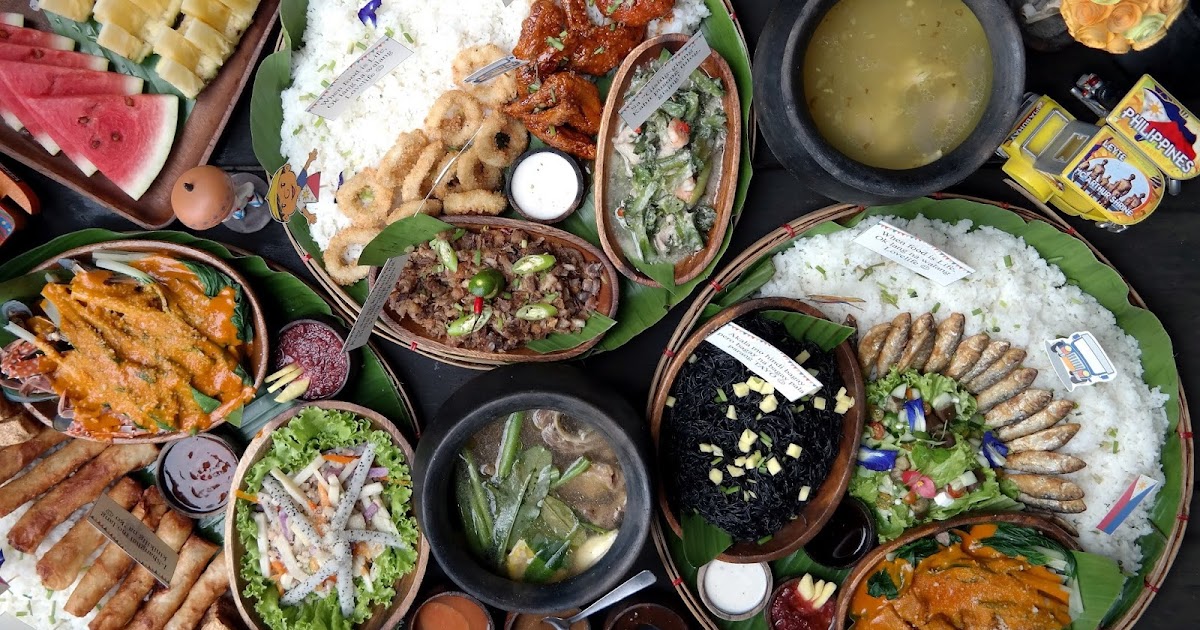In the Philippines, food isn’t just about eating—it’s about sharing. Meals are moments of connection, laughter, and belonging. Whether it’s a grand family feast or a simple street-side snack, dining together is a reflection of the country’s deep sense of community and joy.
The Philippines Restaurants (필리핀 맛집) scene captures this beautifully. From small carinderias to high-end buffets, the atmosphere is always the same—friendly, warm, and full of life.
1) “Kain tayo”: an invitation from the heart
If you’ve ever spent time with Filipinos, you’ve probably heard the phrase “Kain tayo”—which means “Let’s eat.” It’s more than an invitation to share food; it’s an act of generosity, a way of saying you’re welcome here.
Even if there’s little to share, Filipinos will always make room for one more at the table. This spirit defines the 필리핀 맛집 experience across every island.
2) Kamayan: eating with your hands, eating with your heart
One of the most traditional ways to dine in the Philippines is kamayan—a communal meal where food is served on banana leaves and eaten by hand.
It’s informal, joyful, and deeply cultural. Kamayan meals often feature grilled seafood, adobo, pancit, and tropical fruits arranged beautifully in the center for everyone to share.
More restaurants now offer kamayan-style dining, reviving this traditional practice for locals and tourists alike. It’s not just a way of eating—it’s a celebration of equality and connection.
3) The Filipino table: loud, happy, and full of stories
In Filipino homes, meals are rarely quiet. Conversations overlap, laughter fills the air, and there’s always an auntie offering more rice.
This same energy spills into Filipino restaurants, where diners enjoy long, lively meals with friends and family. It’s not uncommon for a lunch to last hours, because food here is never rushed—it’s savored.
The Philippines Restaurants (필리핀 맛집) atmosphere embodies this sense of joy. You don’t just dine—you participate in a celebration of life.
4) Family-style dining and togetherness
Most Filipino restaurants serve family-style dishes, meant to be placed in the center of the table for everyone to share. This setup isn’t about portion control—it’s about connection.
Everyone reaches for what they love, passes plates, and enjoys the unspoken choreography of togetherness. It’s a reminder that meals are more meaningful when shared.
5) Food as love, not luxury
In Filipino culture, food is an expression of love. Parents wake up early to prepare baon (packed meals) for their children. Friends send food deliveries to comfort someone. Neighbors share leftovers after celebrations.
Even in restaurants, chefs often talk about “cooking from the heart.” That emotional authenticity is what makes 필리핀 맛집 cuisine special—it feels personal, because it is.
6) Celebrations through food
Every Filipino gathering revolves around food: birthdays, baptisms, weddings, and even reunions with old friends. There’s always a feast—lechon, noodles for long life, and colorful desserts that brighten the table.
Restaurants mirror this festive culture, offering group platters, unlimited buffets, and dishes designed to serve crowds. Food isn’t just a necessity—it’s the centerpiece of every memory.
7) From the home to the restaurant: preserving tradition
Even as the Philippines modernizes, its dining culture remains grounded in tradition. Many restaurants incorporate elements of the Filipino home—family-style menus, local décor, and the famous timpla ng nanay (mother’s touch).
This preservation of warmth makes the Philippines Restaurants scene feel comforting, no matter how upscale or modern the space.
Final Thought
In the Philippines, dining isn’t a transaction—it’s an experience. Every meal carries a story, every bite brings people closer, and every table reflects the nation’s greatest treasure: its sense of community.
That’s why the 필리핀 맛집 (Philippines Restaurants) culture is so unforgettable. It’s not about what’s on the plate—it’s about who’s sitting beside you.

